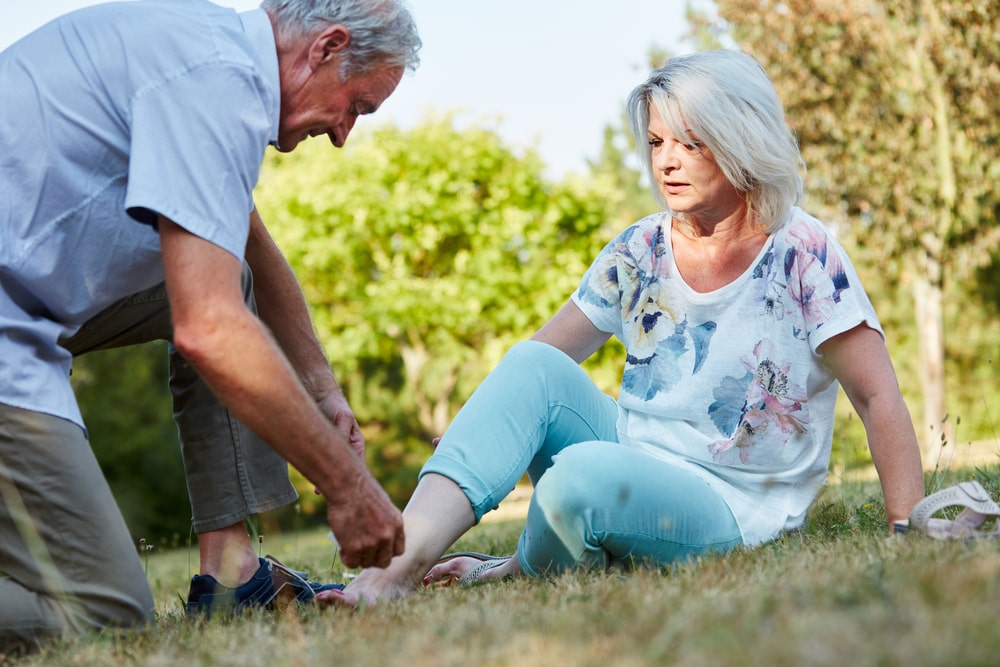Our feet work hard every day as we walk, run, dance, jump and tap our toes. It’s no wonder there are a long list of common foot problems that bring people into The Foot Pod. Some result from injury or incorrect shoes. Others turn up as time – and aging – do their work on the body.
Topping the list of common complaints are corns on feet, Morton’s neuroma and tailor’s bunions. Let’s look closer at the causes, symptoms and treatments for the most prolific podiatry problems.
Corns on feet: Causes, symptoms and treatments
A corn (clavus or heloma) is a thickened, hardened layer of inflamed skin normally round in shape. Hard corns are common on the toes or sole of the foot, whereas soft corns (heloma molle) occur in the soft tissue between toes. Although they are a sign the body is protecting itself, corns can be very painful.
What causes corns on feet?
- Pressure or friction
- Ill-fitting shoes
- Enlarged joints pressing on shoes
- A crooked toe moving under the adjacent toe
Common symptoms
- Pain when walking
- Hard, round bumps on the foot
- Painful when pressed
Calluses and corns look similar, but a callus will not be painful to touch. If you develop calluses, rest up and pay The Foot Pod a visit to prevent corns.
Treatment options
- Debridement (removal of damaged tissue) by a podiatrist
- Custom toe separators
- Wearing correct fitting shoes
Be careful using over-the-counter corn pads. Most contain salicylic acid which, improperly applied, can cause chemical burns and ulceration to the skin.
When conservative treatments fail to alleviate painful corns on feet, your podiatrist may recommend a surgical solution. Surgery to remove corns is quick and simple, usually taking 30 minutes or less to remove the offending corn and address any underlying issues such as a bursa or protruding bone.
Morton’s Neuroma: What is it and how do you treat it?
Morton’s neuroma is a thickening in the tissue around a nerve leading to your toe. It most commonly shows up in the nerve between the second and third toes and, besides being painful to walk on, can feel like you have a rock in your shoe.
What causes Morton’s neuroma?
- High heeled shoes
- Tight shoes
- Pressure on the ball of the foot
Common symptoms
- Feeling like you have a pebble in your shoe, or a fold in your sock
- Burning pain radiating out from the ball of your foot to your toes
- Numbness and tingling after pain
Treatment options
- Correct fitting, flatter shoes
- Padding to support the metatarsal arch
- Icing to reduce swelling
- Custom orthotic devices to relieve pressure on the nerve
- Reduced activity
- Ibuprofen or other anti-inflammatories
Similar to corns, there are surgical options available for chronic or stubborn neuromas. Your podiatrist may inject small amounts of cortisone with local anaesthetic or sclerosing agent. Alternatively a short surgery can be performed to remove the neuroma via an incision on the top of the foot, over the neuroma.
Tailor’s Bunion: More common than you think
Tailor’s bunions, also called bunionettes, are hard bony bumps that develop on the toe joint causing the toe to turn inward. Tailor’s bunions occur on the 5th metatarsophalangeal joint, better known as the pinky toe (regular bunions occur on the big toe).
What causes Tailor’s bunions?
- Tight footwear
- Genetic predisposition
- Misalignment of the foot
- Arthritis
Common symptoms
- Redness and swelling
- Localised pain
- Increased swelling and pain over time
Treatment options
- Wear correct fitting shoes
- Padding over the bunionette
- Orthotic devices
- Icing the area
- Orthoses to correct the biomechanics
- Anti-inflammatories such as ibuprofen
Once again, a short surgery can alleviate the pain of tailor’s bunions. Ostectomy surgery removes the painful bump, and osteotomy realigns the metatarsal bone to correct biomechanics.
Solving Foot Problems with The Foot Pod
Corns on feet, Morton’s neuroma, and Tailor’s bunions are among the prevalent problems affecting Australian adults. If you are experiencing any signs of these common foot problems, even if they are not yet painful, make an appointment with The Foot Pod to get the help you need. Our friendly team will have you dancing out of the clinic in no time!

